Study of a New Wave Energy Converter with Perturb and Observe Maximum Power Point Tracking Method
Abstract
1. Introduction
2. Wave-to-Wire Model
2.1. Dynamic Model of the WEC
2.2. PTO System
3. Maximum Power Point Tracking
4. Simulation Results
4.1. WEC Performance: Influence of Key Parameters
4.2. Time Series for Generator 1
MPPT Optimization of Rg
5. Conclusions
Author Contributions
Funding
Institutional Review Board Statement
Informed Consent Statement
Data Availability Statement
Conflicts of Interest
References
- Sasmaz, M.U.; Sakar, E.; Yayla, Y.E.; Akkucuk, U. The Relationship between Renewable Energy and Human Development in OECD Countries: A Panel Data Analysis. Sustainability 2020, 12, 7450. [Google Scholar] [CrossRef]
- Adekoya, O.B.; Olabode, J.K.; Rafi, S.K. Renewable energy consumption, carbon emissions and human development: Empirical comparison of the trajectories of world regions. Renew. Energy 2021, 179, 1836–1848. [Google Scholar] [CrossRef]
- Sang, Y.; Karayaka, H.B.; Yan, Y.; Yilmaz, N.; Souders, D. 1.18 Ocean (Marine) Energy. In Comprehensive Energy Systems; Elsevier: Amsterdam, The Netherlands, 2018; Volume 1, pp. 733–769. [Google Scholar] [CrossRef]
- Mei, C.C.; Stiassnie, M.A.; Yue, D.K.-P. Theory and Applications of Ocean Surface Waves (In 2 Volumes), 3rd ed.; World Scientific: Singapore, 2018; pp. 1–1171. [Google Scholar] [CrossRef]
- Rasool, S.; Muttaqi, K.M.; Sutanto, D.; Iqbal, S. Modeling ocean waves and investigation of oceanic wave spectra for wave-to-wire system. J. Eng. Res. 2022, 10, 1–17. [Google Scholar] [CrossRef]
- Abdelwahed, H.G.; Abdelrahman, M.A.E.; Alsarhana, A.F.; Mohamed, K. Investigation of the Ripa Model via NHRS Scheme with Its Wide-Ranging Applications. Fractal Fract. 2022, 6, 745. [Google Scholar] [CrossRef]
- González, A.T.; Dunning, P.; Howard, I.; McKee, K.; Wiercigroch, M. Is wave energy untapped potential? Int. J. Mech. Sci. 2021, 205, 106544. [Google Scholar] [CrossRef]
- Veerabhadrappa, K.; Suhas, B.; Mangrulkar, C.K.; Kumar, R.S.; Mudakappanavar, V.; Narahari;Seetharamu, K. Power Generation Using Ocean Waves: A Review. Glob. Transit. Proc. 2022, 3, 359–370. [Google Scholar] [CrossRef]
- Ahamed, R.; McKee, K.; Howard, I. Advancements of wave energy converters based on power take off (PTO) systems: A review. Ocean Eng. 2020, 204, 107248. [Google Scholar] [CrossRef]
- Beatty, S.J.; Bocking, B.; Bubbar, K.; Buckham, B.J.; Wild, P. Experimental and numerical comparisons of self-reacting point absorber wave energy converters in irregular waves. Ocean Eng. 2019, 173, 716–731. [Google Scholar] [CrossRef]
- Blanco, M.; Torres, J.; Santos-Herrán, M.; García-Tabarés, L.; Navarro, G.; Nájera, J.; Ramírez, D.; Lafoz, M. Recent Advances in Direct-Drive Power Take-Off (DDPTO) Systems for Wave Energy Converters Based on Switched Reluctance Machines (SRM); Springer International Publishing: Berlin/Heidelberg, Germany, 2022; pp. 487–532. [Google Scholar] [CrossRef]
- Guo, B.; Wang, T.; Jin, S.; Duan, S.; Yang, K.; Zhao, Y. A Review of Point Absorber Wave Energy Converters. J. Mar. Sci. Eng. 2022, 10, 1534. [Google Scholar] [CrossRef]
- López, I.; Andreu, J.; Ceballos, S.; de Alegría, I.M.; Kortabarria, I. Review of wave energy technologies and the necessary power-equipment. Renew. Sustain. Energy Rev. 2013, 27, 413–434. [Google Scholar] [CrossRef]
- Val, D.V. Reliability of Marine Energy Converters. Energies 2023, 16, 3387. [Google Scholar] [CrossRef]
- Albert, A.; Berselli, G.; Bruzzone, L.; Fanghella, P. Mechanical design and simulation of an onshore four-bar wave energy converter. Renew. Energy 2017, 114, 766–774. [Google Scholar] [CrossRef]
- Jusoh, M.A.; Ibrahim, M.Z.; Daud, M.Z.; Albani, A.; Yusop, Z.M. Hydraulic Power Take-Off Concepts for Wave Energy Conversion System: A Review. Energies 2019, 12, 4510. [Google Scholar] [CrossRef]
- Juan, N.P.; Valdecantos, V.N.; Esteban, M.D.; Gutiérrez, J.S.L. Review of the Influence of Oceanographic and Geometric Parameters on Oscillating Water Columns. J. Mar. Sci. Eng. 2022, 10, 226. [Google Scholar] [CrossRef]
- Rosati, M.; Henriques, J.; Ringwood, J. Oscillating-water-column wave energy converters: A critical review of numerical modelling and control. Energy Convers. Manag. X 2022, 16, 100322. [Google Scholar] [CrossRef]
- Ahamed, R.; McKee, K.; Howard, I. A Review of the Linear Generator Type of Wave Energy Converters’ Power Take-Off Systems. Sustainability 2022, 14, 9936. [Google Scholar] [CrossRef]
- Avalos, G.O.G.; Shadman, M.; Estefen, S.F. Application of the Latching Control System on the Power Performance of a Wave Energy Converter Characterized by Gearbox, Flywheel, and Electrical Generator. J. Mar. Sci. Appl. 2021, 20, 767–786. [Google Scholar] [CrossRef]
- Binh, P.C.; Tri, N.M.; Dung, D.T.; Ahn, K.K.; Kim, S.; Koo, W. Analysis, design and experiment investigation of a novel wave energy converter. IET Gener. Transm. Distrib. 2016, 10, 460–469. [Google Scholar] [CrossRef]
- Kofoed, J.P.; Tetu, A.; Ferri, F.; Margheritini, L.; Sonalier, N.; Larsen, T. Real Sea Testing of a Small Scale Weptos WEC Prototype. In Proceedings of the International Conference on Offshore Mechanics and Arctic Engineering, Madrid, Spain, 17–22 June 2018; Volume 10, pp. 1–9. [Google Scholar] [CrossRef]
- Sanada, M.; Inoue, Y.; Morimoto, S. Generator design and characteristics in direct-link wave power generating system considering appearance probability of waves. In Proceedings of the 2012 International Conference on Renewable Energy Research and Applications (ICRERA), Nagasaki, Japan, 11–14 November 2012; pp. 1–6. [Google Scholar] [CrossRef]
- Shadman, M.; Guarniz Avalos, G.O.; Estefen, S.F. On the power performance of a wave energy converter with a direct mechanical drive power take-off system controlled by latching. Renew. Energy 2021, 169, 157–177. [Google Scholar] [CrossRef]
- Sjolte, J.; Sandvik, C.M.; Tedeschi, E.; Molinas, M. Exploring the Potential for Increased Production from the Wave Energy Converter Lifesaver by Reactive Control. Energies 2013, 6, 3706–3733. [Google Scholar] [CrossRef]
- Ringwood, J.V. Wave energy control: Status and perspectives 2020. IFAC-PapersOnLine 2020, 53, 12271–12282. [Google Scholar] [CrossRef]
- Ringwood, J.V.; Merigaud, A.; Faedo, N.; Fusco, F. An Analytical and Numerical Sensitivity and Robustness Analysis of Wave Energy Control Systems. IEEE Trans. Control Syst. Technol. 2020, 28, 1337–1348. [Google Scholar] [CrossRef]
- Ding, B.; Cazzolato, B.S.; Arjomandi, M.; Hardy, P.; Mills, B. Sea-state based maximum power point tracking damping control of a fully submerged oscillating buoy. Ocean Eng. 2016, 126, 299–312. [Google Scholar] [CrossRef]
- Pena, J.C.U.; de Brito, M.A.G.; Melo, G.D.A.E.; Canesin, C.A. A comparative study of MPPT strategies and a novel singlephase integrated buck-boost inverter for small wind energy conversion systems. In Proceedings of the COBEP 2011—11th Brazilian Power Electronics Conference, Natal, Brazil, 11–15 September 2011; pp. 458–465. [Google Scholar] [CrossRef]
- De Brito, M.A.G.; Galotto, L.; Sampaio, L.P.; Melo, G.D.A.E.; Canesin, C.A. Evaluation of the Main MPPT Techniques for Photovoltaic Applications. IEEE Trans. Ind. Electron. 2013, 60, 1156–1167. [Google Scholar] [CrossRef]
- Xiao, X.; Huang, X.; Kang, Q. A Hill-Climbing-Method-Based Maximum-Power-Point-Tracking Strategy for Direct-Drive Wave Energy Converters. IEEE Trans. Ind. Electron. 2016, 63, 257–267. [Google Scholar] [CrossRef]
- Amon, E.A.; Brekken, T.K.A.; Schacher, A.A. Maximum Power Point Tracking for Ocean Wave Energy Conversion. IEEE Trans. Ind. Appl. 2012, 48, 1079–1086. [Google Scholar] [CrossRef]
- Lettenmaier, T.; Von Jouanne, A.; Brekken, T. A New Maximum Power Point Tracking Algorithm for Ocean Wave Energy Converters. Int. J. Mar. Energy 2017, 17, 40–55. [Google Scholar] [CrossRef]
- Hardy, P.; Cazzolato, B.; Ding, B.; Prime, Z. A maximum capture width tracking controller for ocean wave energy converters in irregular waves. Ocean Eng. 2016, 121, 516–529. [Google Scholar] [CrossRef]
- Villalba, I.; Blanco, M.; Pérez-Díaz, J.I.; Fernández, D.; Díaz, F.; Lafoz, M. Wave farms grid code compliance in isolated small power systems. IET Renew. Power Gener. 2019, 13, 171–179. [Google Scholar] [CrossRef]
- Aderinto, T.; Li, H. Ocean Wave Energy Converters: Status and Challenges. Energies 2018, 11, 1250. [Google Scholar] [CrossRef]
- Kim, S.-J.; Koo, W.; Shin, M.-J. Numerical and experimental study on a hemispheric point-absorber-type wave energy converter with a hydraulic power take-off system. Renew. Energy 2019, 135, 1260–1269. [Google Scholar] [CrossRef]
- Yang, S.; Chen, H.; Ji, Z.; Li, H.; Xiang, X. Modelling and analysis of inertia self-tuning phase control strategy for a floating multi-body wave energy converter. IET Renew. Power Gener. 2021, 15, 3126–3137. [Google Scholar] [CrossRef]
- Cummins, W.E. The Impulse Response Function and Ship Motions. Open J. Fluid Dyn. 1962, 57, 101–109. [Google Scholar]
- Ogilvie, T.F.; Model, D.T.; Washington, B.; Scheepsbouwkwide, L.Y. Recent Progress toward the Understanding and Prediction of Ship Motions. In Proceedings of the 5th Symposium on Naval Hydrodynamics, Bergen, Norway, 10–12 September 1964; David, W., Ed.; Taylor Model Basin: Washington, DC, USA, 1964; pp. 3–80. [Google Scholar]
- Morison, J.R.; O’Brien, M.P.; Johnson, J.W.; Schaaf, S.A. The forces exerted by surface waves on piles. J. Pet. Trans. 1950, 2, 149–154. [Google Scholar] [CrossRef]
- Sumer, B.M.; Fredsøe, J. Hydrodynamics Around Cylindrical Structures; World Scientific: Singapore, 2006. [Google Scholar] [CrossRef]
- Frameless Motor for Direct Drive | Alxion | Torque Motors, Permanent Magnet Generators, Resolvers, Servo Drives. Available online: http://www.alxion.com/products/stk-alternators/ (accessed on 14 April 2023).
- Budynas, R.; Nisbett, J. Shigley’s Mechanical Engineering Design; McGraw Hill: New York, NY, USA, 2011. [Google Scholar]
- Journée, J.; Massie, W. Offshore Hydromechanics; CITG Section Hydraulic Engineering: Delft, The Netherlands, 2000. [Google Scholar]
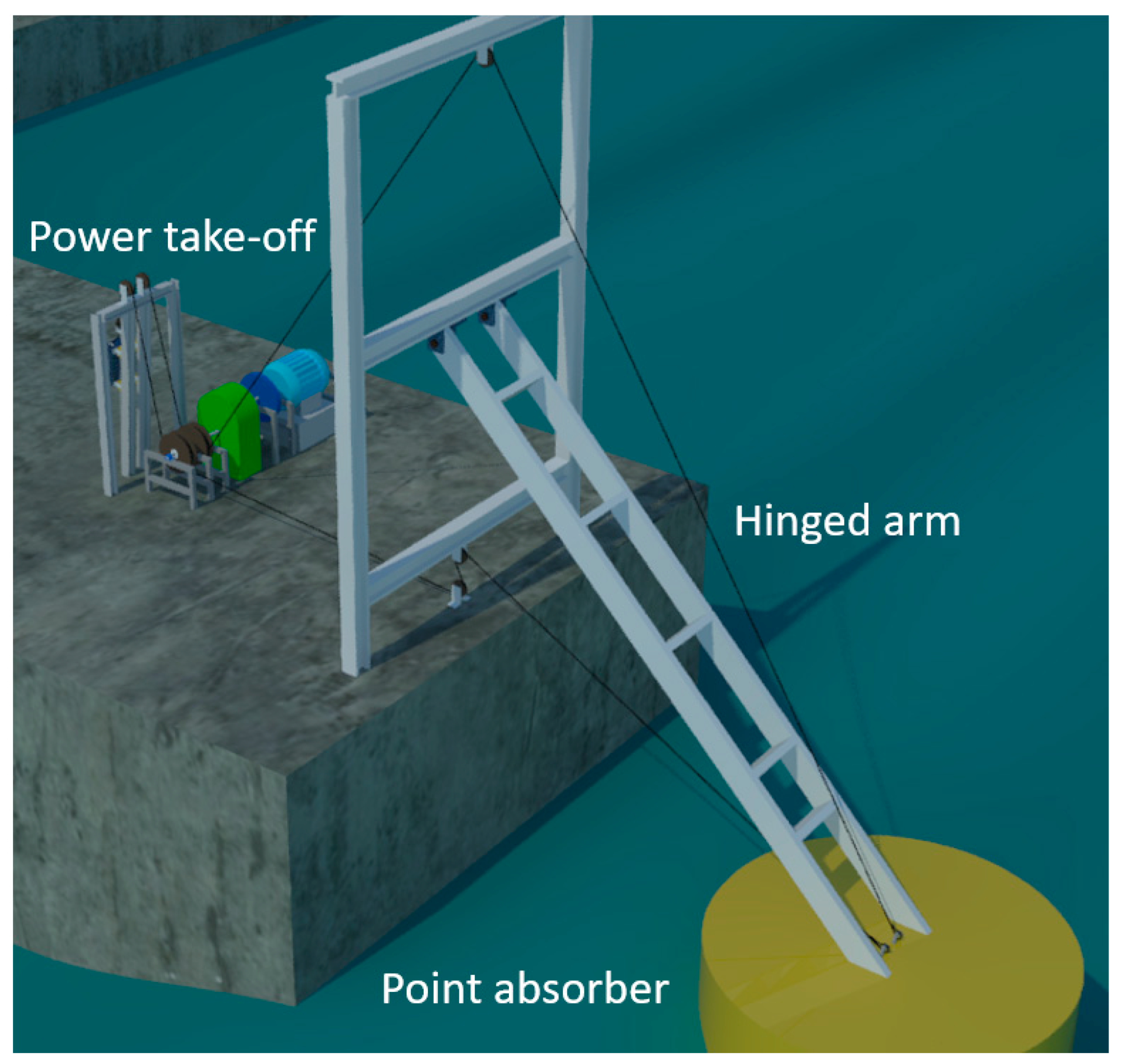
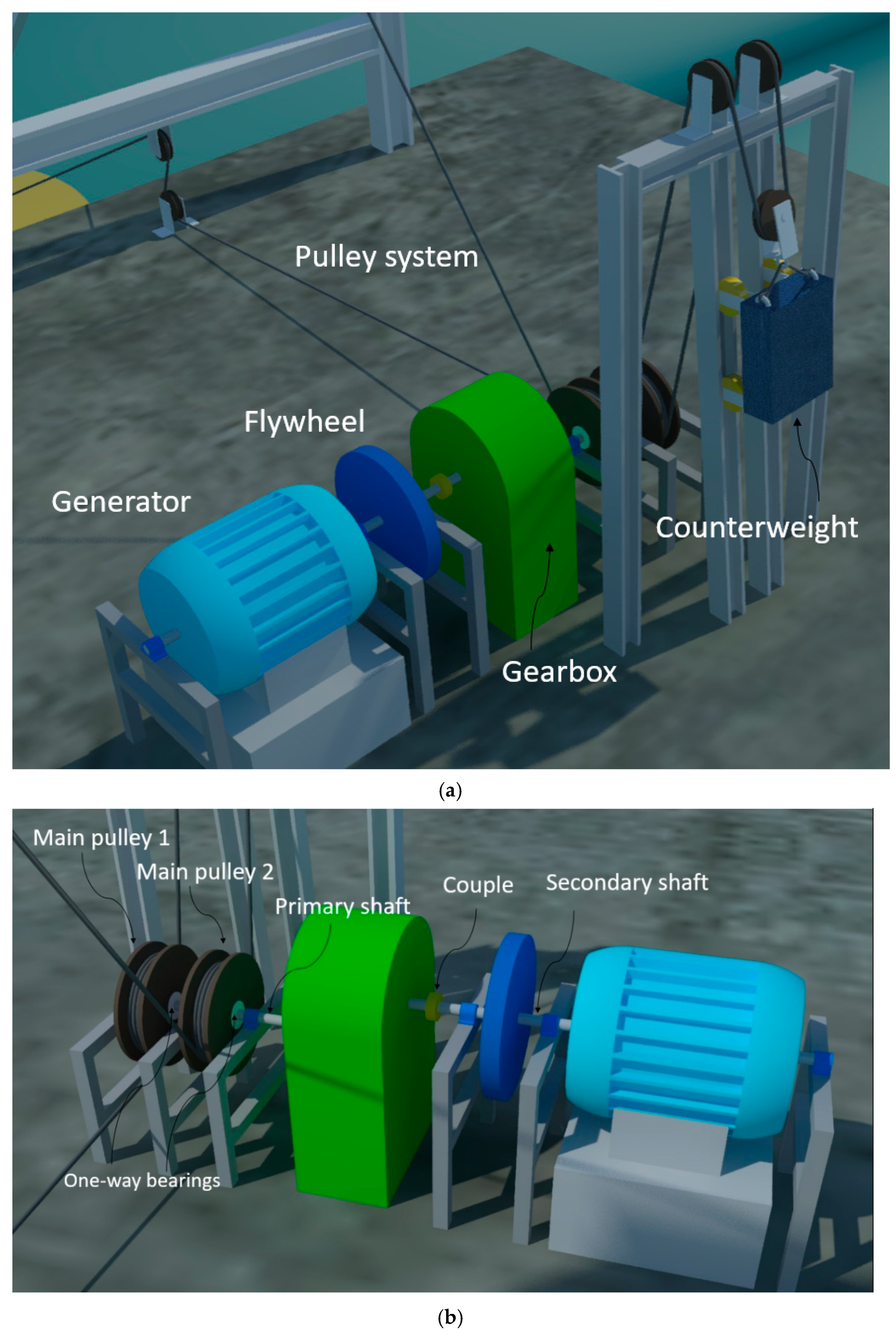
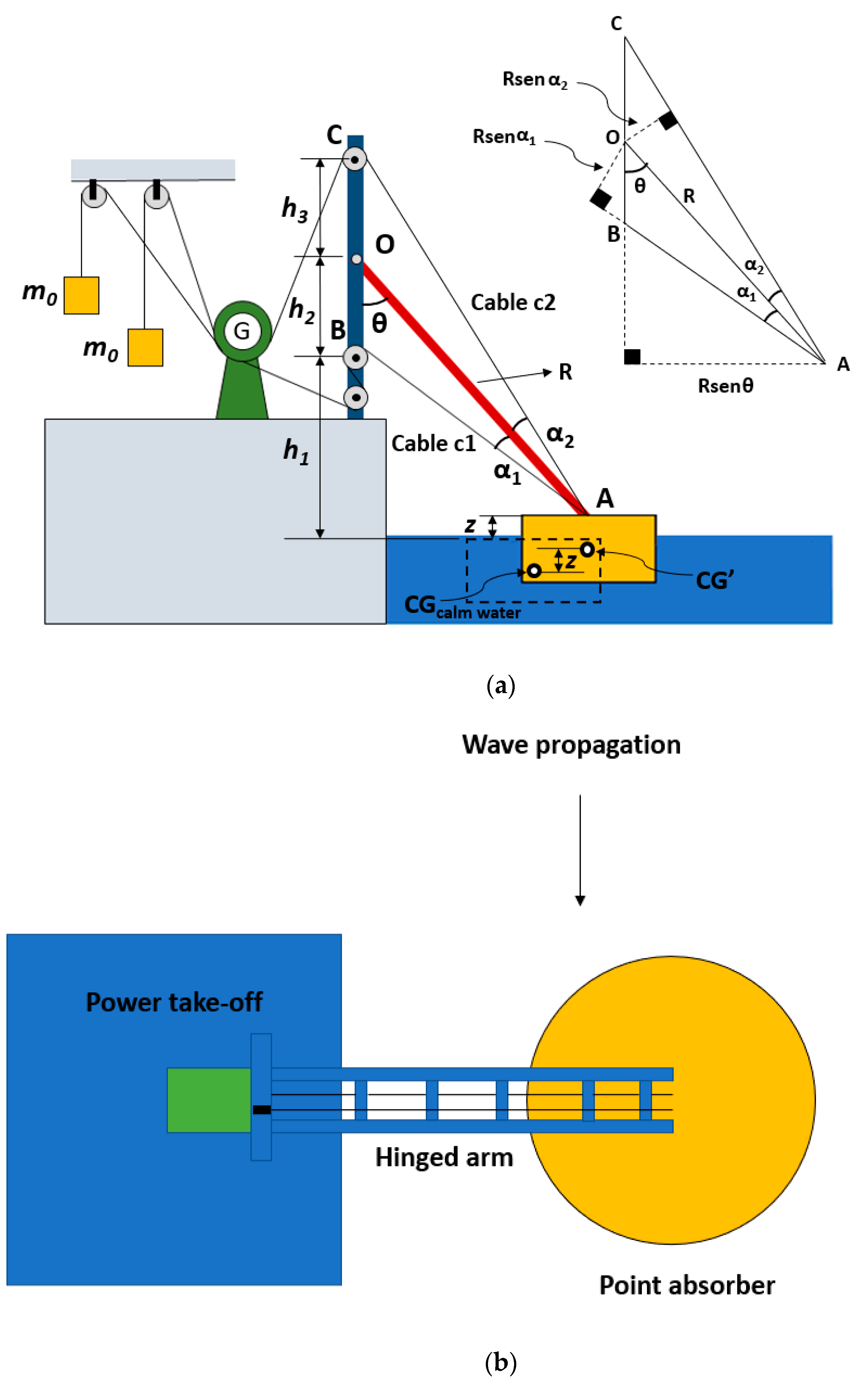
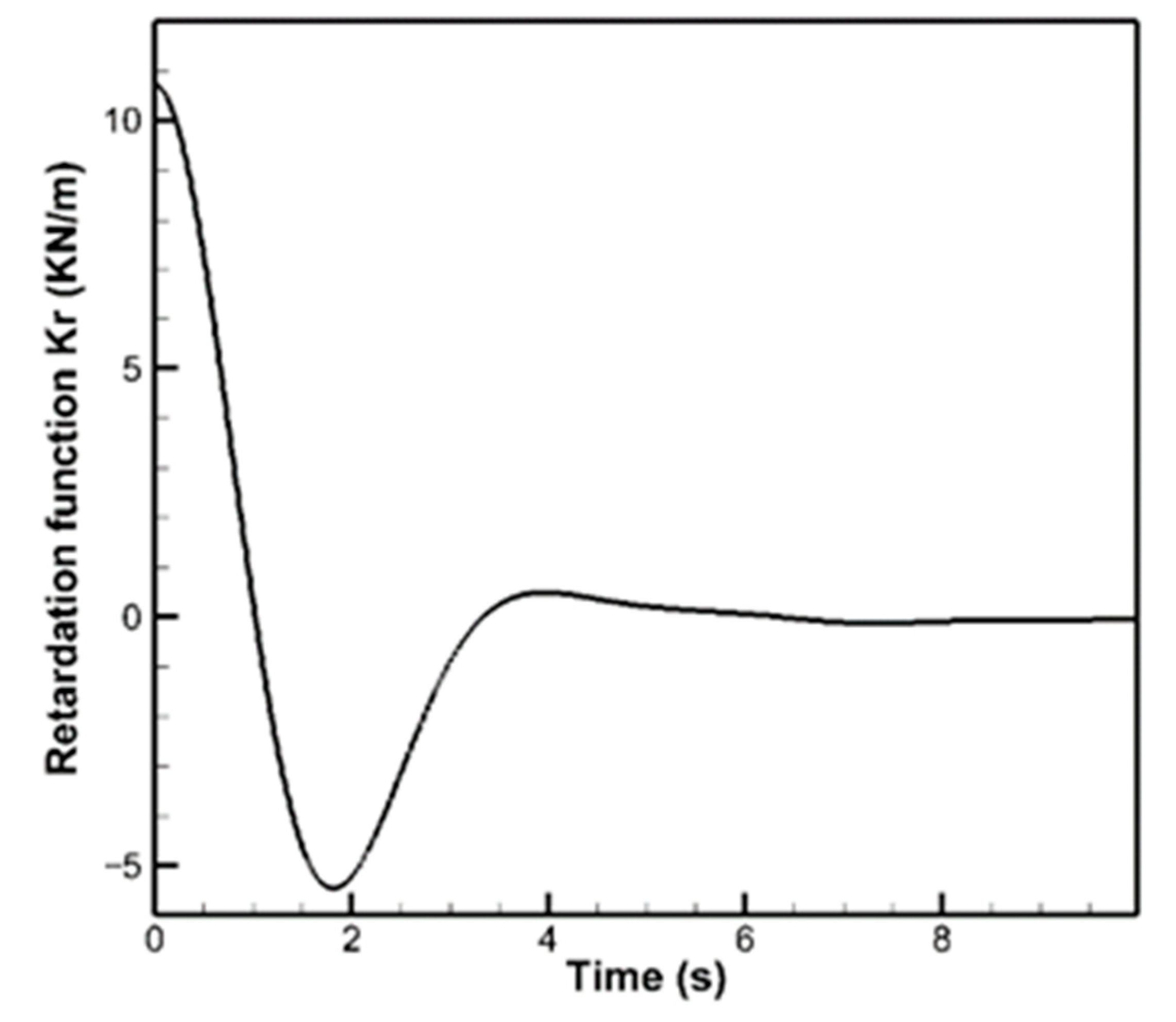
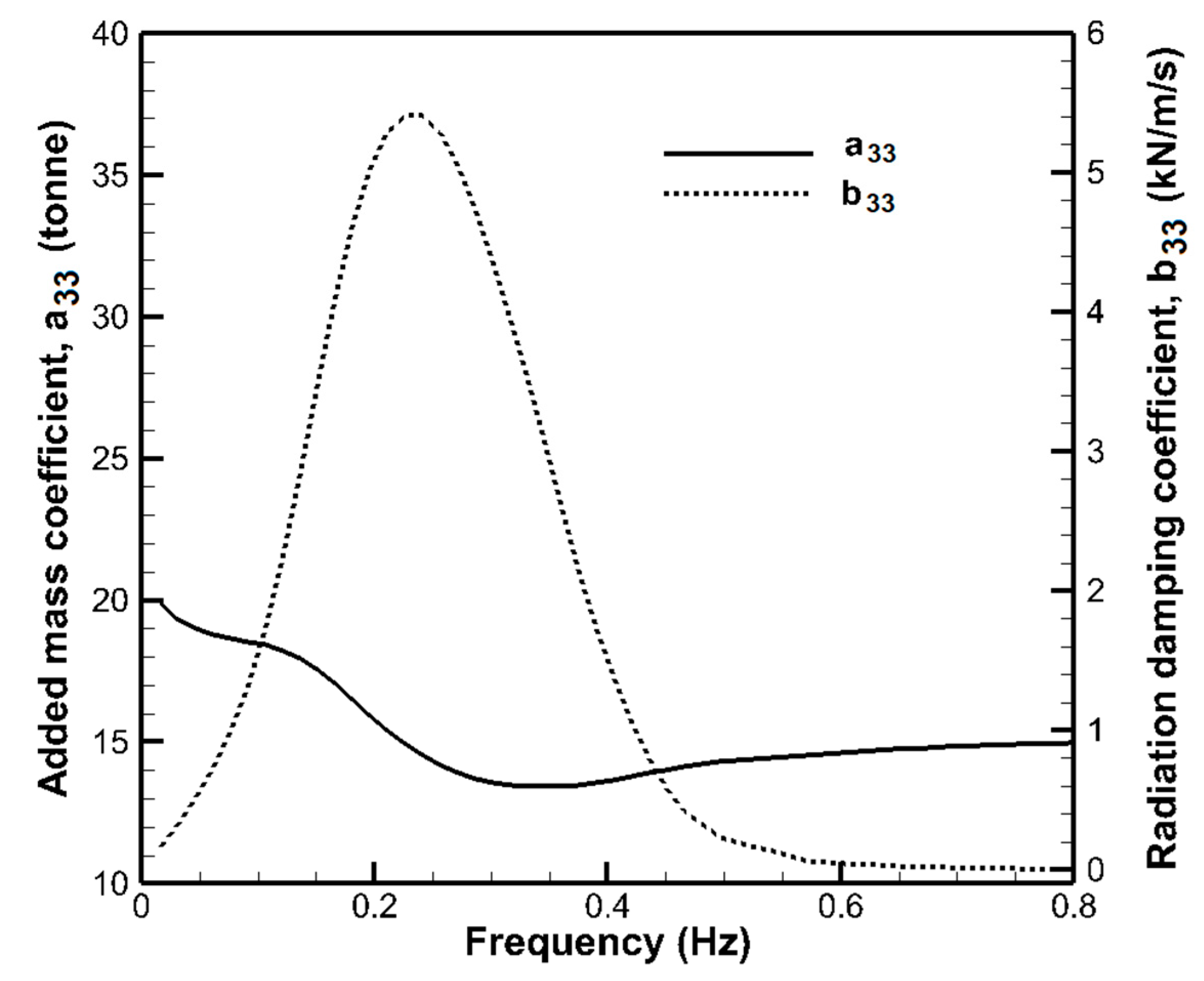
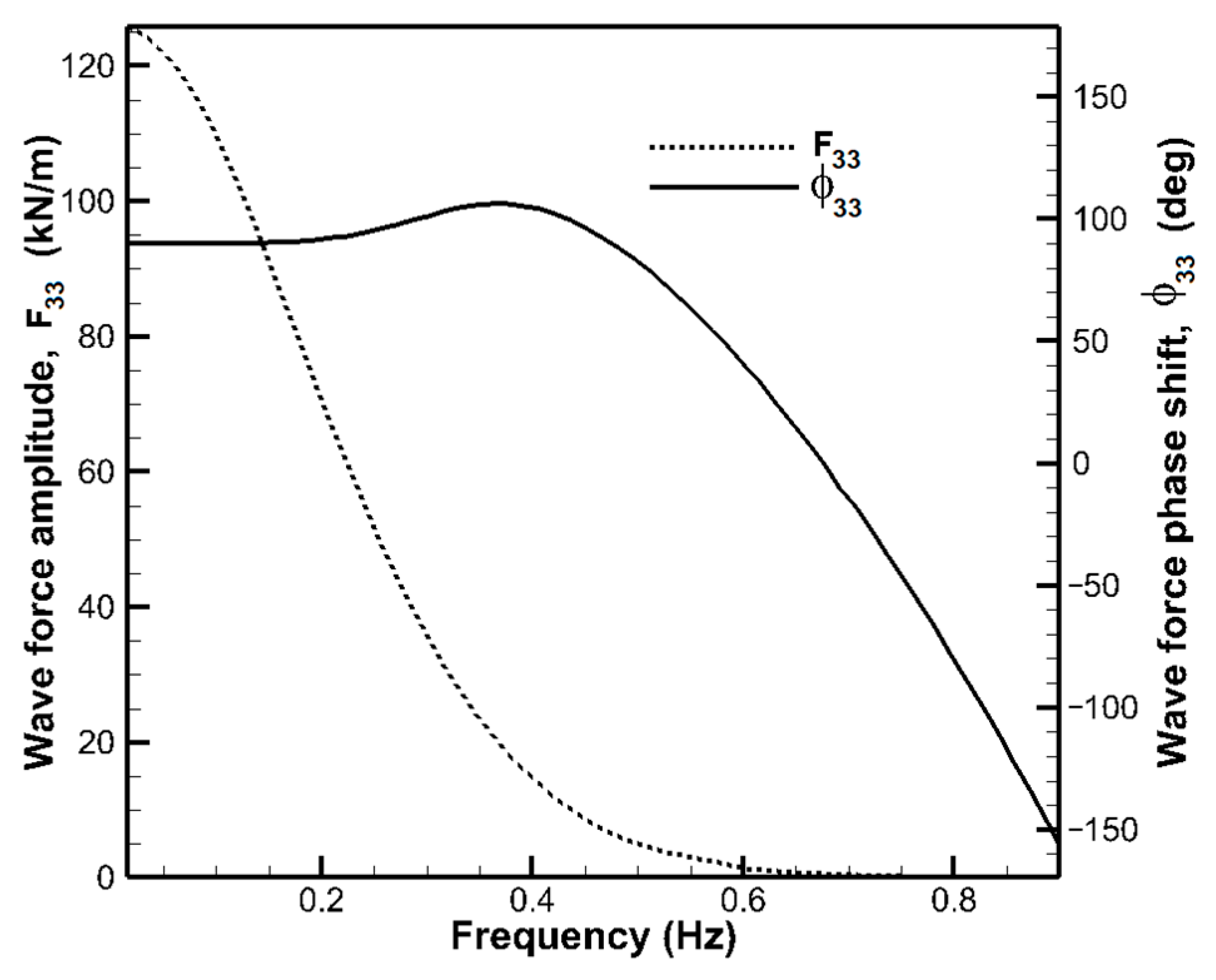
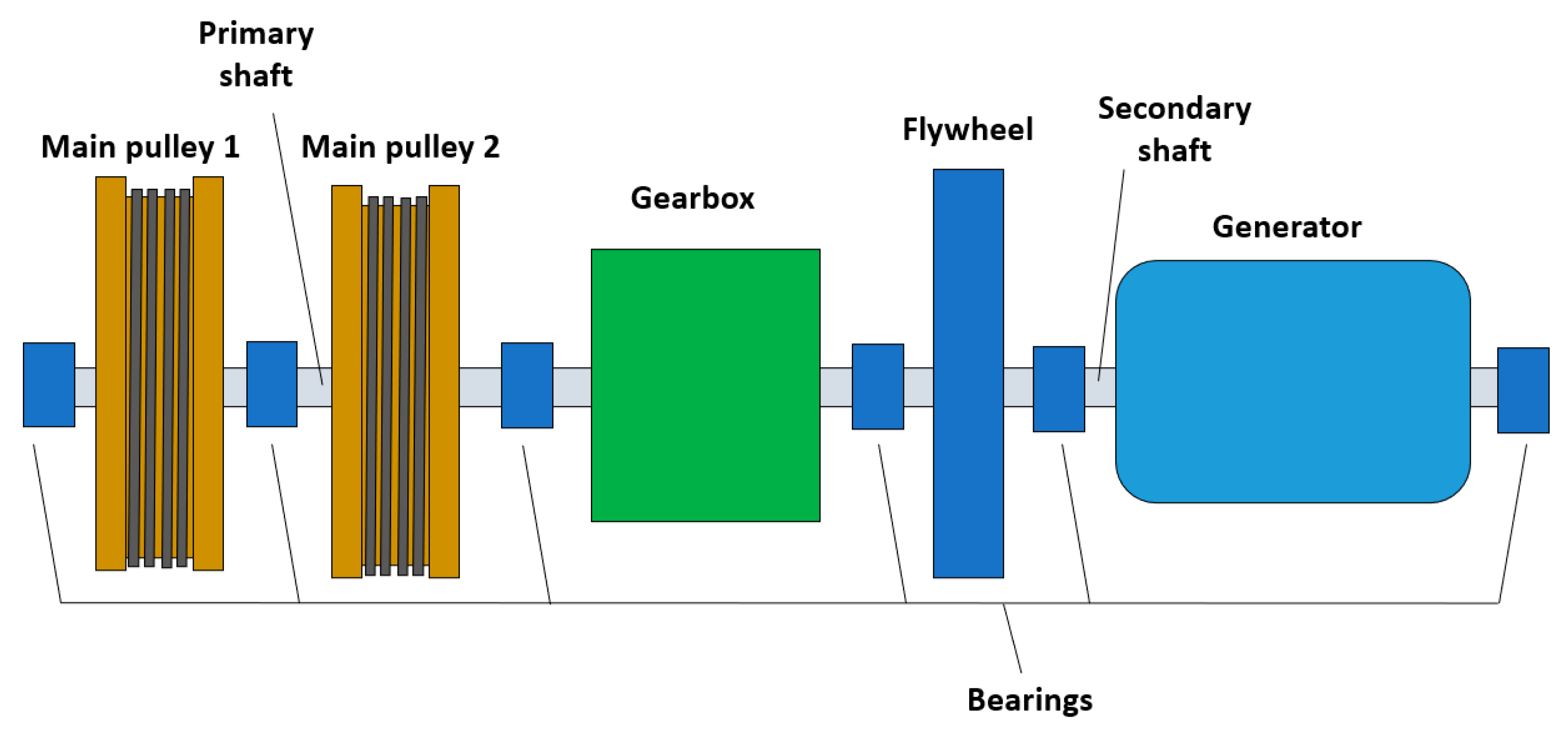
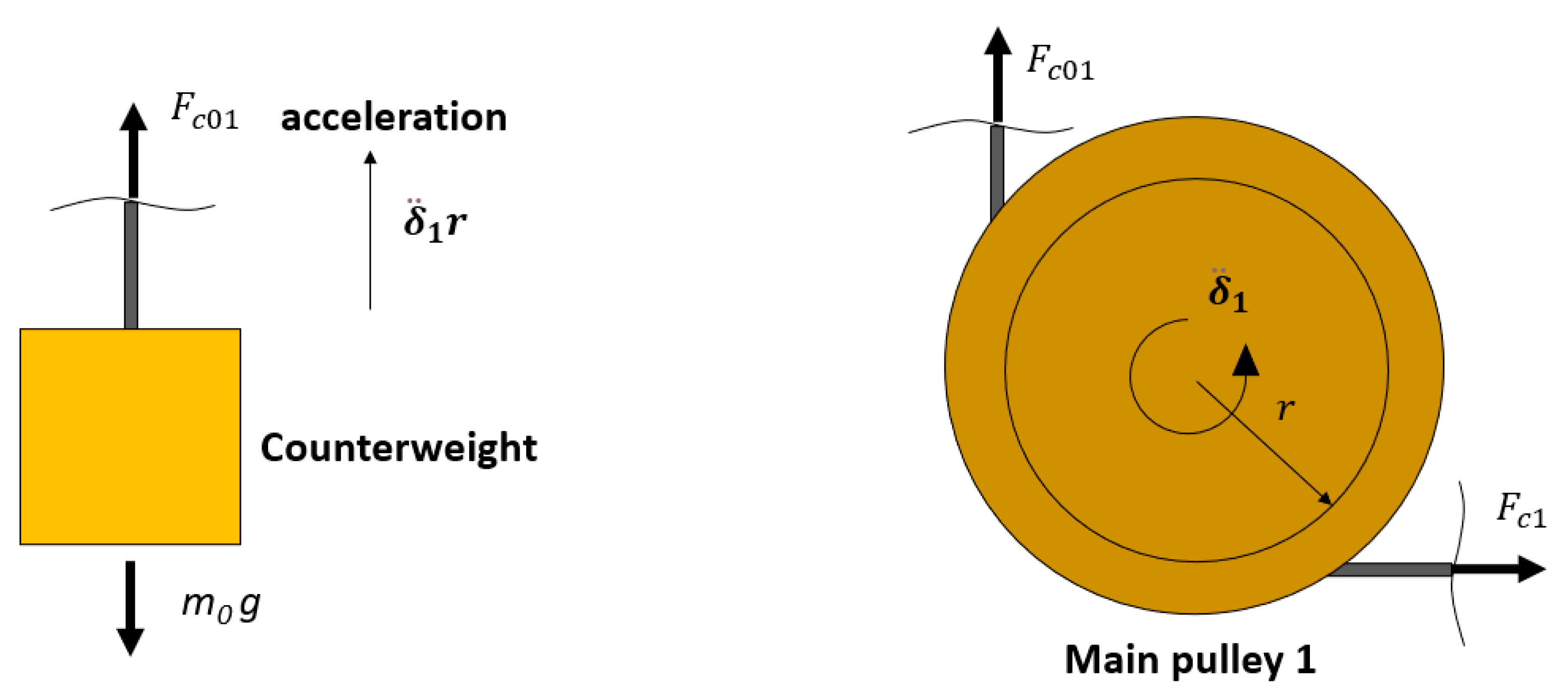
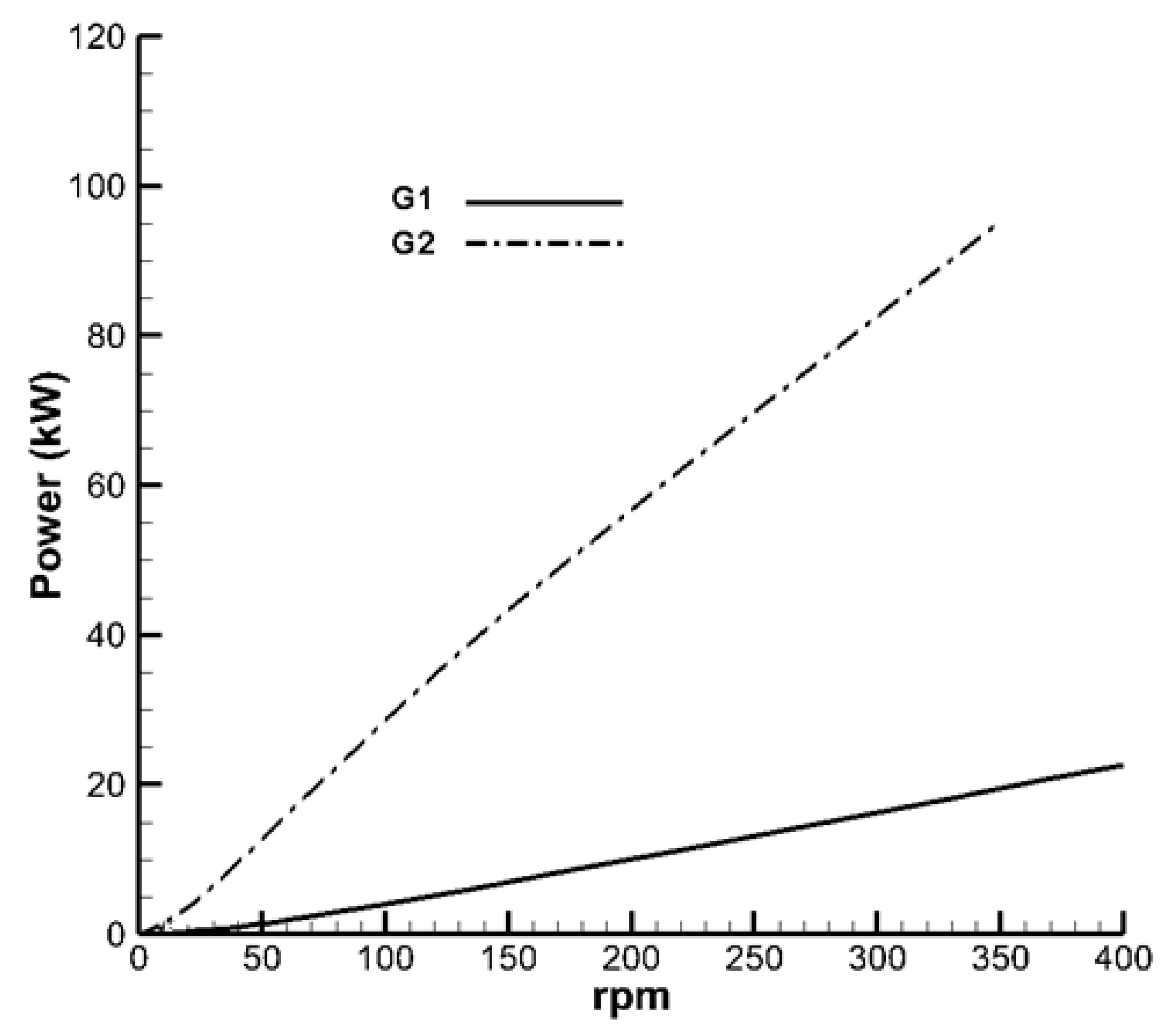
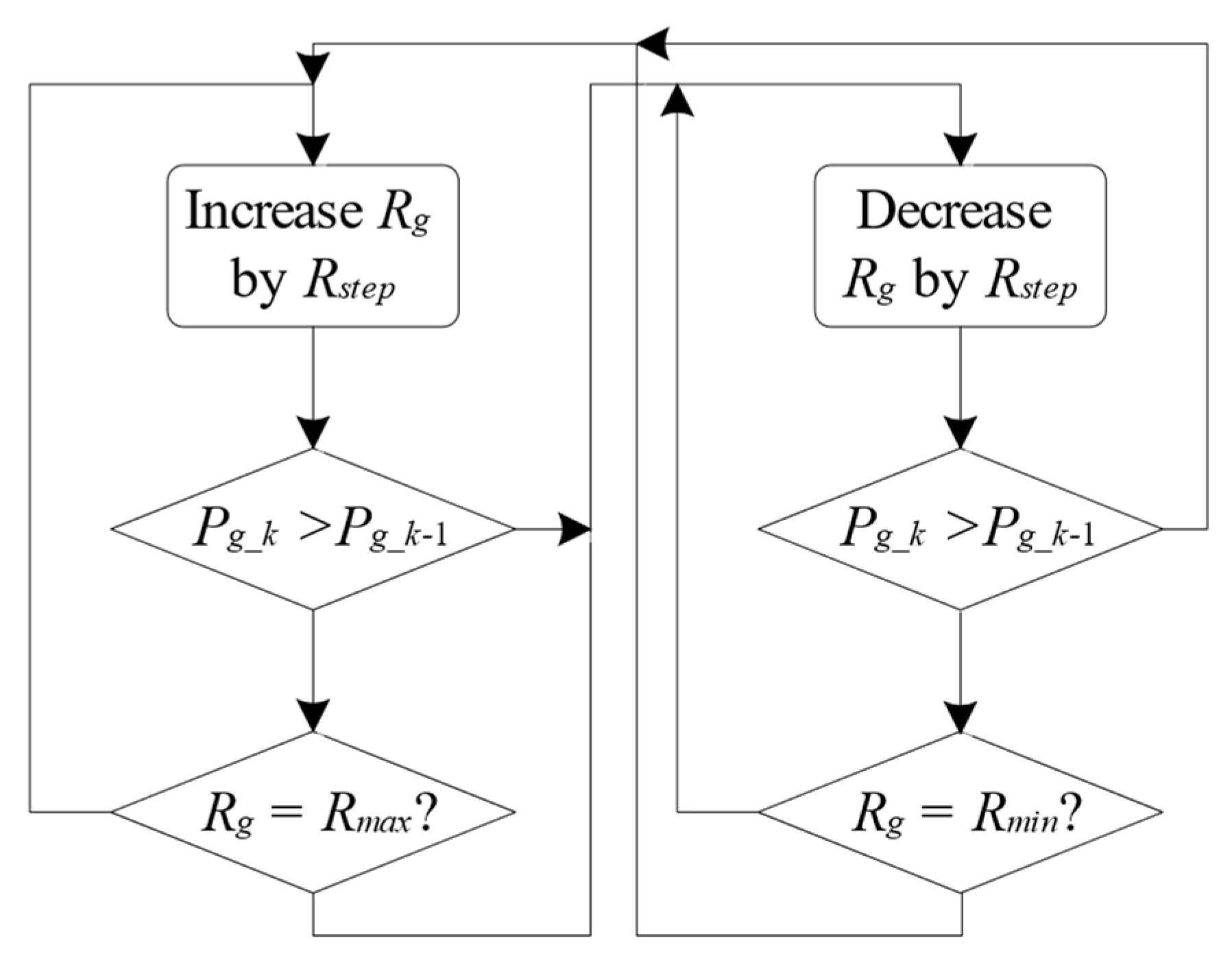
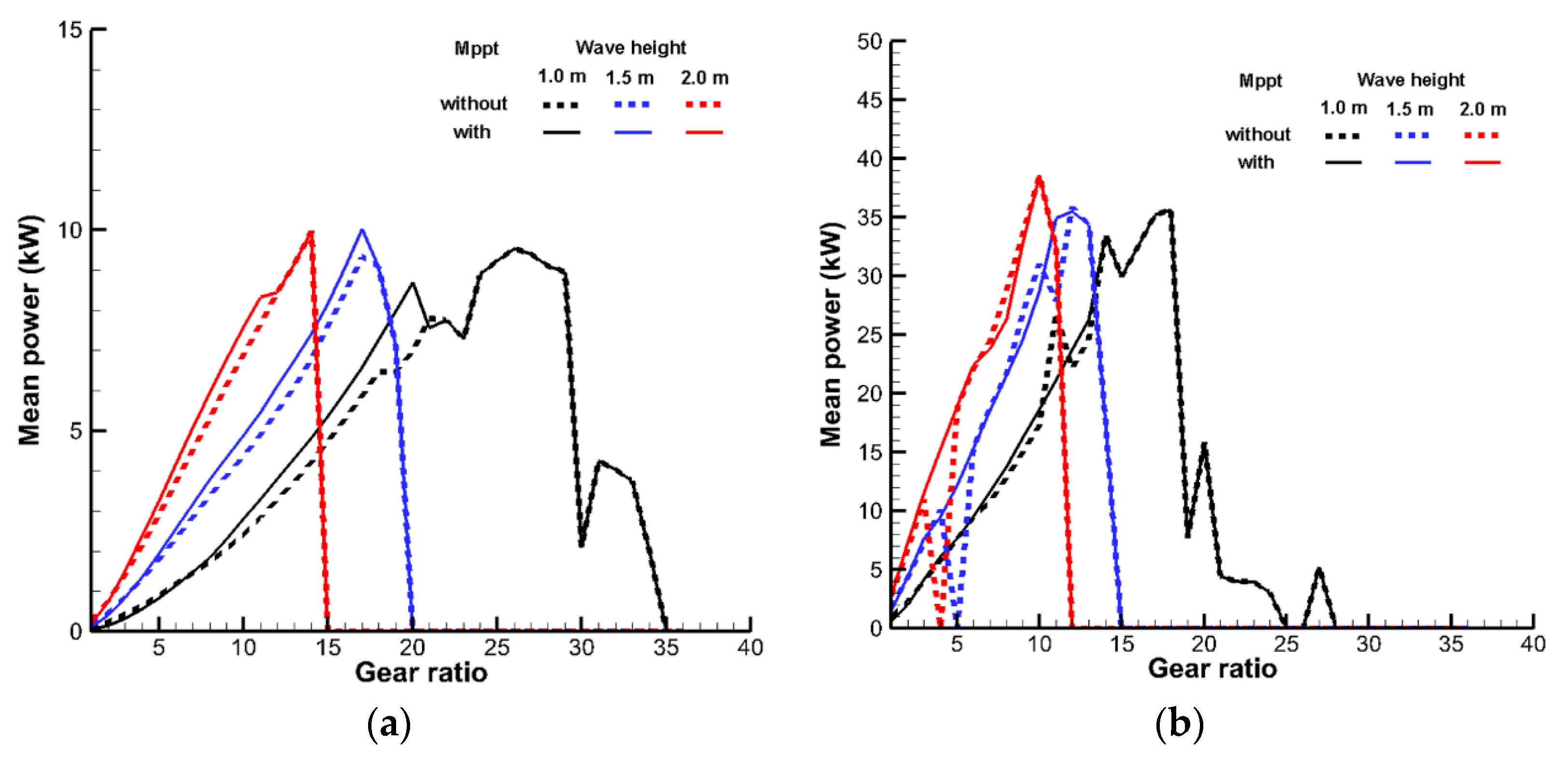



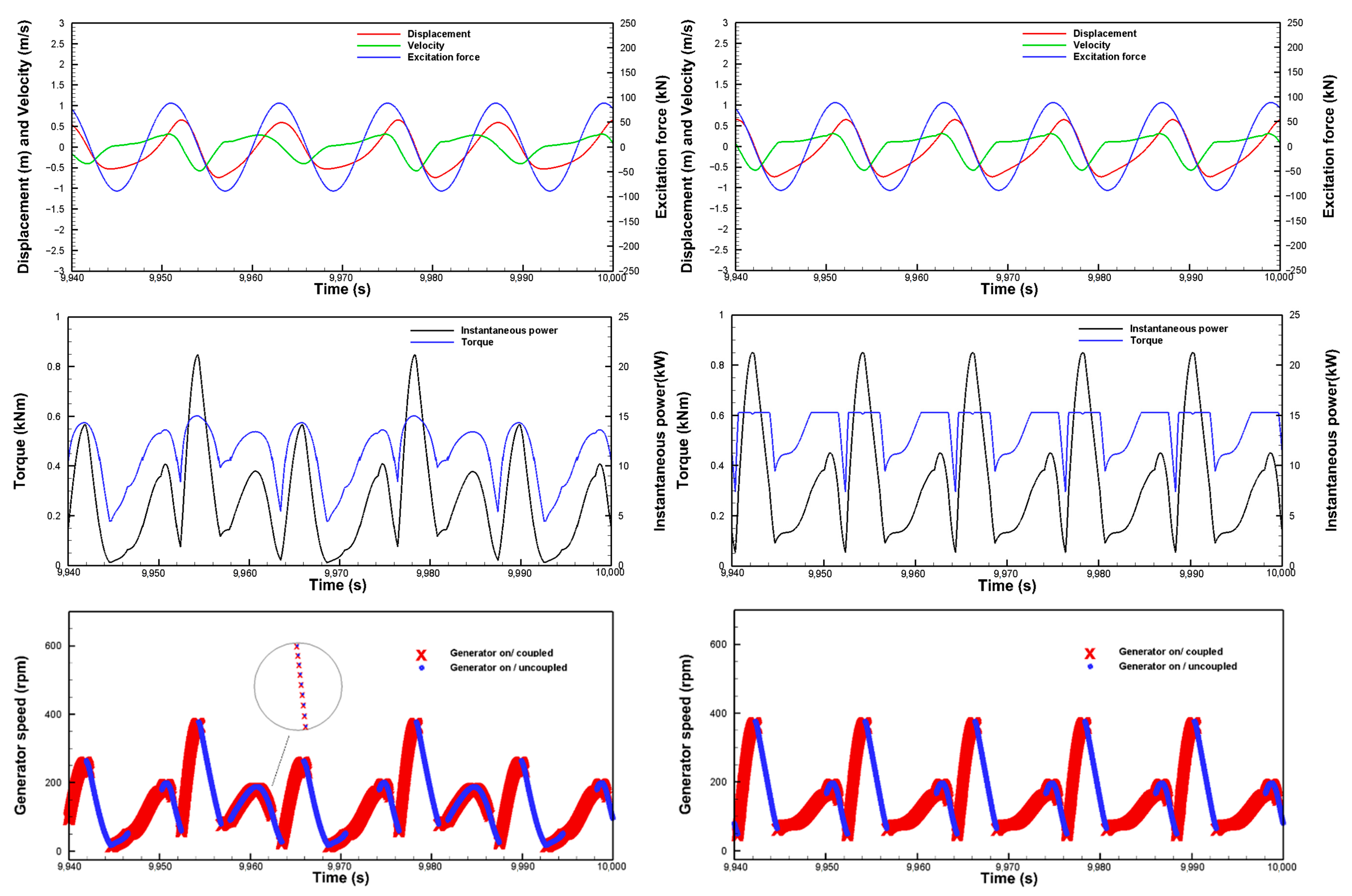
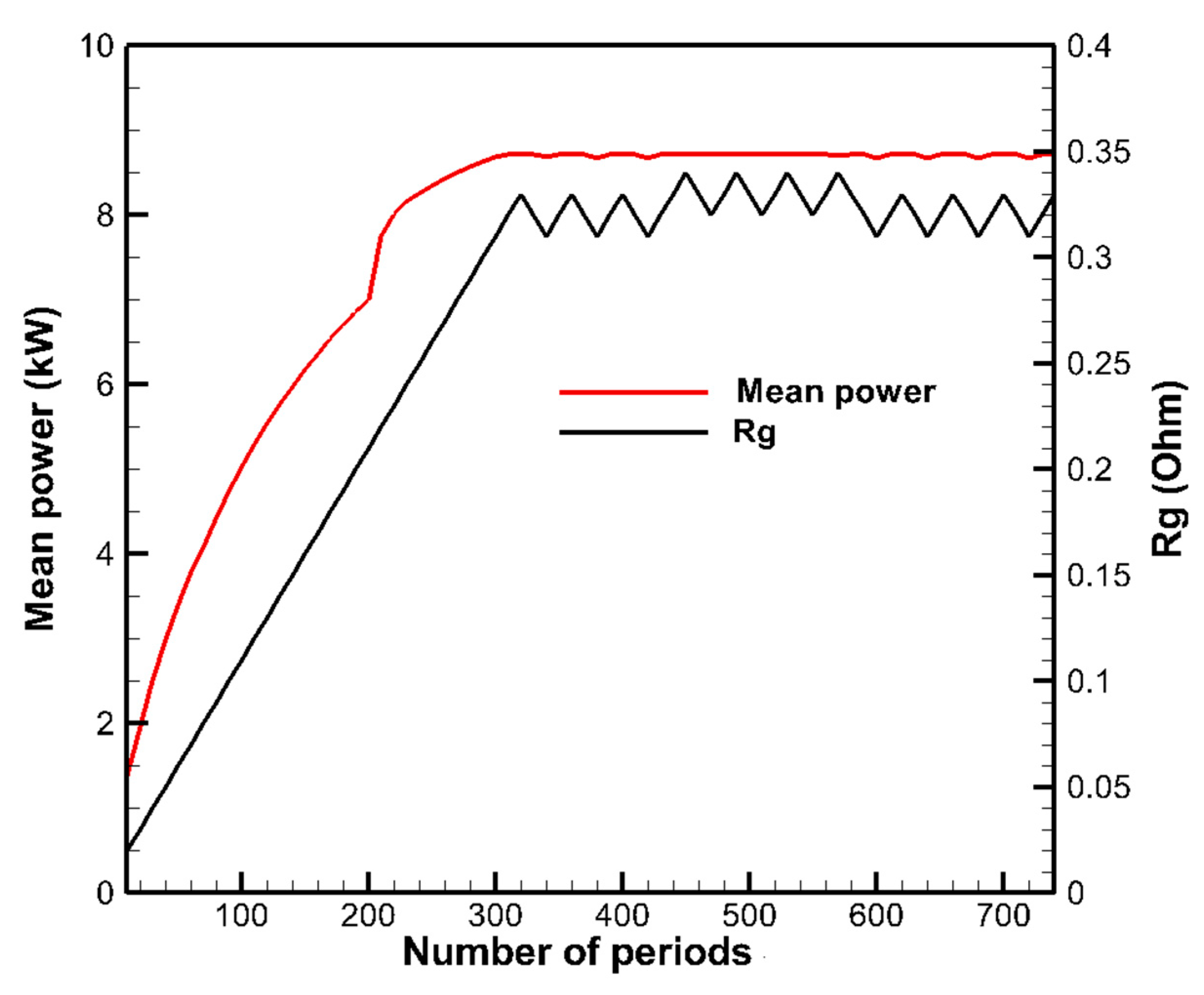
| Parameter | Value |
|---|---|
| Mass (m) | 40.25 t |
| Diameter (D) | 5 m |
| Draft (T) | 2 m |
| Natural Period (Tn) | 3.64 s |
| Parameter | Value |
|---|---|
| 3.83 m | |
| 3.83 m | |
| 3.83 m | |
| 10 m | |
| 0.25 t |
| Parameters | G1 | G2 |
|---|---|---|
| Rated power (W) | 22,678 | 95,484 |
| Rated speed (rpm) | 400 | 350 |
| Rotor inertia (kgm2) | 1.270 | 7.620 |
| Rated torque (Nm) | 611 | 2771 |
| (%) | 89 | 94 |
| Phase resistance (Ohm) at 20 °C | 0.2 | 0.02 |
| Phase inductance (mH) | 0.94 | 0.27 |
| Voltage at no load (back emf) at 20 °C | 299 | 336 |
Disclaimer/Publisher’s Note: The statements, opinions and data contained in all publications are solely those of the individual author(s) and contributor(s) and not of MDPI and/or the editor(s). MDPI and/or the editor(s) disclaim responsibility for any injury to people or property resulting from any ideas, methods, instructions or products referred to in the content. |
© 2023 by the authors. Licensee MDPI, Basel, Switzerland. This article is an open access article distributed under the terms and conditions of the Creative Commons Attribution (CC BY) license (https://creativecommons.org/licenses/by/4.0/).
Share and Cite
Ugaz Peña, J.C.; Medina Rodríguez, C.L.; Guarniz Avalos, G.O. Study of a New Wave Energy Converter with Perturb and Observe Maximum Power Point Tracking Method. Sustainability 2023, 15, 10447. https://doi.org/10.3390/su151310447
Ugaz Peña JC, Medina Rodríguez CL, Guarniz Avalos GO. Study of a New Wave Energy Converter with Perturb and Observe Maximum Power Point Tracking Method. Sustainability. 2023; 15(13):10447. https://doi.org/10.3390/su151310447
Chicago/Turabian StyleUgaz Peña, José Carlos, Christian Luis Medina Rodríguez, and Gustavo O. Guarniz Avalos. 2023. "Study of a New Wave Energy Converter with Perturb and Observe Maximum Power Point Tracking Method" Sustainability 15, no. 13: 10447. https://doi.org/10.3390/su151310447
APA StyleUgaz Peña, J. C., Medina Rodríguez, C. L., & Guarniz Avalos, G. O. (2023). Study of a New Wave Energy Converter with Perturb and Observe Maximum Power Point Tracking Method. Sustainability, 15(13), 10447. https://doi.org/10.3390/su151310447






